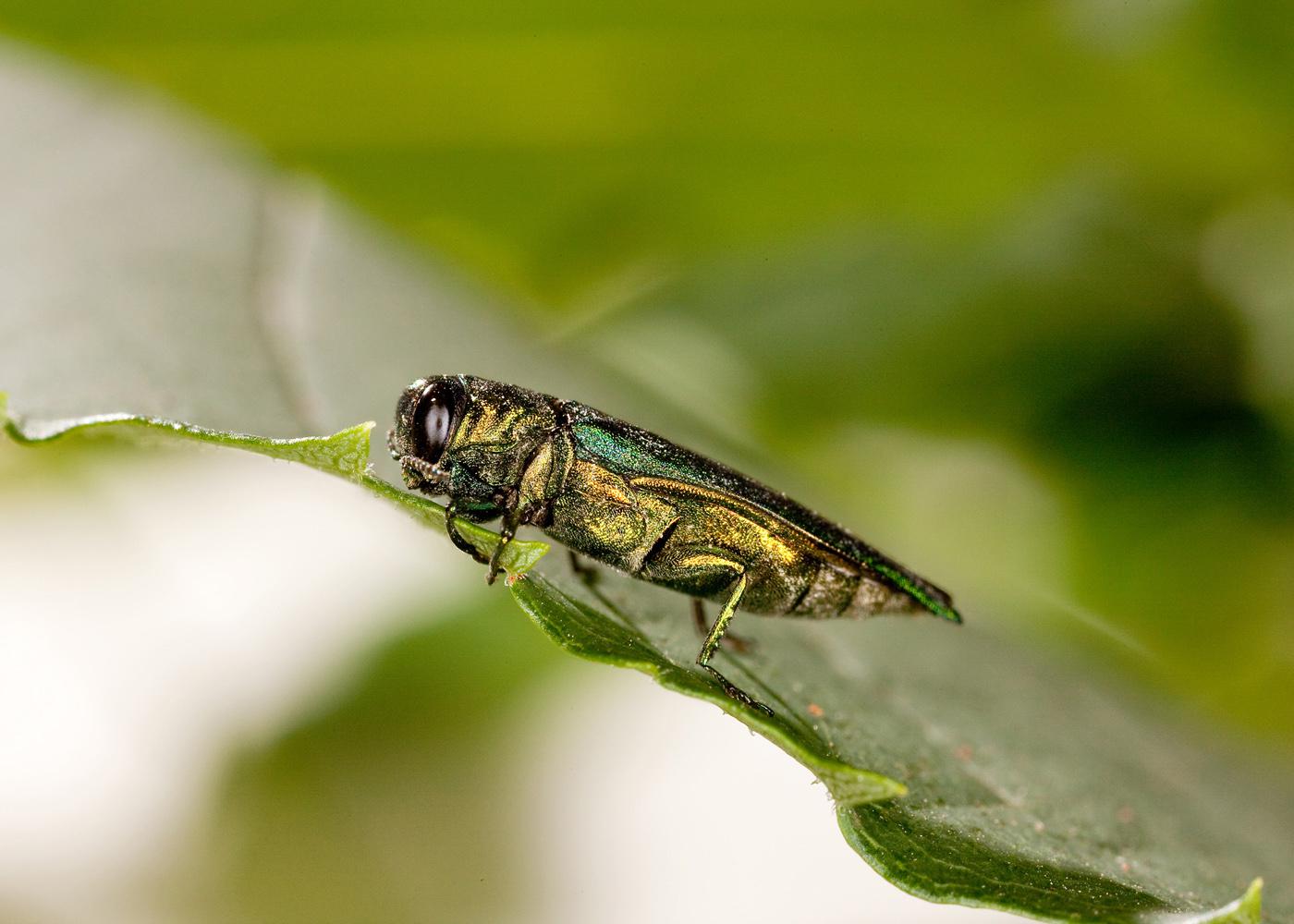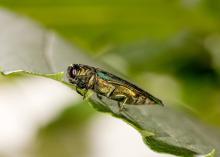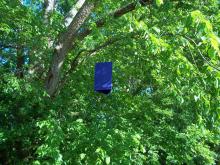Information Possibly Outdated
The information presented on this page was originally released on April 28, 2011. It may not be outdated, but please search our site for more current information. If you plan to quote or reference this information in a publication, please check with the Extension specialist or author before proceeding.
Experts search for small, destructive beetle
By Karen Templeton
MSU Ag Communications
MISSISSIPPI STATE – Federal and state government experts have teamed up with Mississippi State University to search for a small beetle that could mean big trouble for Mississippi.
According the U.S. Department of Agriculture’s Animal and Plant Health Inspection Service, the emerald ash borer, or EAB, is responsible for the death or decline of tens of millions of ash trees in 15 states. The EAB is metallic green and about 1/2 inch long. The beetle’s larva tunnels under the bark and disrupts the ash tree’s absorption of food and water, eventually starving and killing it.
The beetle is native to Asia and arrived in the United States hidden in wood packing materials commonly used to ship consumer goods. The first official U.S. identification of EAB was in southeastern Michigan in 2002. Thus far, the pest has not been found in Mississippi.
“When EAB was detected just north of Knoxville, Tennessee we got concerned about its possible spread to Mississippi,” said Jeff Head, APHIS’s State Plant Health Director for Mississippi. “We now have a program in place in the state to monitor for EAB.”
Along with the Mississippi Department of Agriculture and Commerce, APHIS officials have set EAB traps across the state.
“Between the two agencies, we’ve set about 210 traps,” Head said. “They are placed where there are large concentrations of ash trees, such as parks and campgrounds. The traps are purple and triangular and are hung in ash trees or secured to trunks.”
Quick detection of EAB is necessary so that eradication programs can begin before the bug causes costly damage to the state’s ash trees. The Mississippi Entomological Museum at MSU is ready to identify the destructive beetles. In 2009, APHIS designated the museum as an Eastern Region Identification Center, and all suspect species are sent to experts there for assessment.
“Anything that seems out of the ordinary is sent to us, and we get it identified. We have the capability to screen for a whole list of destructive species quickly, including EAB. It takes us about one to two days to screen all the samples that we receive on a daily basis,” said Richard Brown, the museum’s director and professor in the MSU Department of Biochemistry, Molecular Biology, Entomology and Plant Pathology. “If we were to get a positive result, we’d follow a predetermined protocol to alert federal officials.”
Brown said EAB would have a significant impact on the state’s trees.
“If it were to make its way here, it would certainly affect the many ash trees we have here in Mississippi,” he said. “That’s why reporting any suspected cases is important.”
Head said public participation in EAB surveying is encouraged.
“We want people to be aware of the traps and to leave them in place. Also, we’d really like those with ash trees to contact us so that we can set traps on their properties,” Head said. “The Nature Conservancy is already helping us by conducting visual surveys, and we’d like to have more groups assist us.”
The public can help prevent the introduction of the EAB into Mississippi by restricting its movement. The most effective way to stop the spread of the EAB is not to move firewood. The EAB’s eggs and larvae tunnel into the trees they infest. Adult beetles can emerge from cut wood and then move on to infest healthy trees.
“Humans move the EAB a lot faster than it can move itself, especially through the movement of firewood. People should make sure their wood is from local sources, and they need to burn it where they buy it,” Head said. “It is important not to carry it across state lines or out of any quarantine areas.”
Contact Head at (662) 323-1291 or jeffery.l.head@aphis.usda.gov to participate in EAB surveying or to report a potential EAB find.




